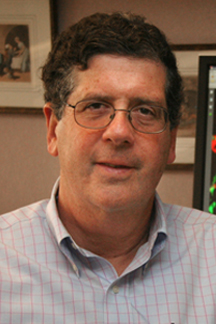Research Suggests Caution and Further Studies on Drugs Used to Treat Macular Degeneration
Millions of people with “wet” macular degeneration are prescribed a class of medication known as anti-VEGF drugs. But now scientists at The Scripps Research Institute (TSRI) have found that a drastic reduction of VEGF activity may do more harm than good.
In the new study, the researchers deleted the gene for the blood-vessel growth factor VEGF, which has been implicated in stimulating abnormal blood vessel growth in a range of cancers and eye diseases, from cells in the retinas of adult mice. The results showed that without VEGF a large subset of light-sensing cells lost their main blood supply and shut down, causing severe vision loss.
“It’s becoming clear that VEGF has a critical function in maintaining the health of the retina, and we need to preserve that critical function when we treat VEGF-related conditions,” said TSRI Professor Martin Friedlander, senior author of the new study, which appears in the November 2012 issue of the Journal of Clinical Investigation.
Major Target for Drug Developers
VEGF (vascular endothelial growth factor) has long been a major target for drug developers. Tumors often overproduce VEGF to stimulate local blood vessel growth and thus keep their fast-dividing cells well supplied with oxygen and nutrients. Low-oxygen conditions in the eyes of elderly or diabetic individuals also can trigger the overproduction of VEGF, resulting in a vision-destroying bloom of abnormal, leaky retinal blood vessels.
Several anti-VEGF drugs (such as Lucentis® (ranibizumab), Macugen (pegaptanib), Eylea® (aflibercept) and Avastin® (bevacizumab)) are already in use, and dozens more are in clinical trials against cancers and common eye disorders such as wet macular degeneration.
However, to date there have not been extensive studies on the effects of such drugs on the normal role of VEGF, in part because it is hard to generate adult animals that lack the VEGF gene. When the gene is removed from the embryos of mice, in a standard “knockout” experiment, the mice fail to develop normally and die before birth.
New Insights
In the new study, Friedlander laboratory postdoctoral fellows Toshihide Kurihara and Peter D. Westenskow found a way to delete the major VEGF gene from mice after the animals had grown to adulthood. To determine VEGF’s role in the retina, they confined the gene deletion to the animals’ retinal pigment epithelial cells, which nourish and repair the retina and are a major retinal source of VEGF. The result suggests that VEGF does have a crucial function in the adult retina.
“Only three days after we knocked down the gene, we observed the complete deterioration of the choriocapillaris, a layer of capillaries that is a major supplier of nutrients to the outer retina, the location of the rod and cone photoreceptors,” said Kurihara.
Nearby light-sensing cone cells, which are specialized for detecting color and fine detail in visual images, also rapidly lost their function, causing pronounced vision loss in the mice. Seven months after the knockdown of the VEGF gene, the retinal damage and vision loss were still evident. “The deterioration seems irreversible if VEGF is not present,” said Westenskow.
Rod cells, which support low-light and peripheral vision, were not affected by the VEGF-gene deletion. The researchers note that cone cells may be more vulnerable because they are unusually active metabolically and may be unable to withstand a significant decrease in blood supply. Cone cells also bear receptors for VEGF molecules and thus may require direct VEGF stimulation to remain healthy. In any case, even if only cone cells died and rod cells were spared, a patient would experience severe vision loss. “You’d be defeating your purpose if you dried up the abnormal blood vessel growth but at the same time killed off the cone cells,” said Friedlander.
Paths for Future Research
Whether such side effects are happening with existing anti-VEGF treatments is unclear. While these assessments are possible, but they have been considered prohibitively expensive and invasive.
Friedlander, however, now believes such studies are necessary and plans to conduct such assessments in eye-disorder patients—who typically receive direct injections of anti-VEGF drugs to their eyes—to determine whether the drugs are causing these adverse side effects. He notes that the evaluations may be particularly necessary for a new class of anti-VEGF drugs recently approved for use in the treatment of age-related macular degeneration—drugs that are much more potent and persistent than previous anti-VEGF agents.
Fortunately, anti-VEGF drugs are not the only possible strategy for treating pathological blood vessel growth, as the new study makes clear. VEGF-related tumors and eye conditions also involve the overproduction of low-oxygen signaling proteins known as HIFs. The team found that deleting the genes for these HIFs in retinal cells largely prevents blood vessel overgrowth in a standard mouse model—without affecting the normal-level production of retinal VEGF or causing eye damage.
“In light of the present findings, other strategies for treating these eye conditions could be a possibility,” Friedlander said. “Conceivably, an anti-HIF treatment could also be combined with an anti-VEGF treatment, allowing the dose of the latter to be lowered significantly.”
The Friedlander lab, in collaboration with the laboratories of David Chereshand Michael Sailor of the University of California, San Diego, has also been exploring the potential utility of inhibiting microRNAs that regulate angiogenic genes further upstream to VEGF. This work is being supported by a $10 million grant from the National Eye Institute and could lead to the development of antagonists that avoid the off-target effects of VEGF inhibitors.
In addition to Friedlander, Kurihara and Westenskow, other contributors to the study, “Targeted deletion of Vegfa in adult mice induces vision loss,” were Stephen Bravo and Edith Aguilar, both of TSRI. For more information on the paper, see http://www.jci.org/articles/view/65157.
The study was supported in part by grants from the National Eye Institute of the National Institutes of Health (EY-11254, EY-021416), the Lowy Medical Research Institute, the Manpei Suzuki Diabetes Foundation and The Japan Society for the Promotion of Science.
Send comments to: press[at]scripps.edu
















